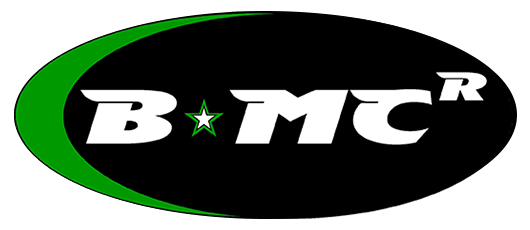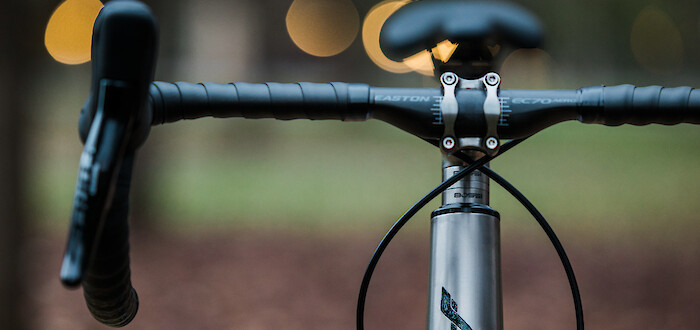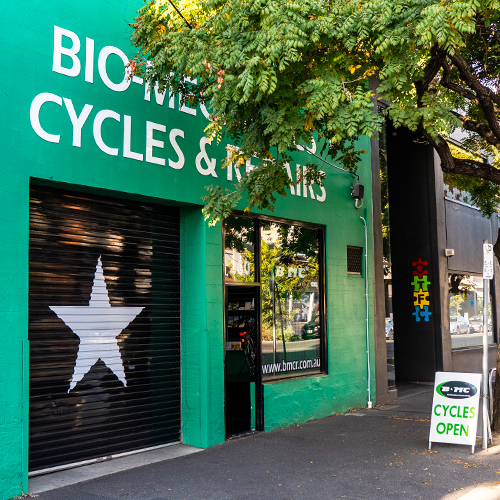Stop Wasting Time On Your ITBs


How to fix your ITBs - fast!
Ever experienced knee pain while riding your bike? How about a clicking or popping sensation? Perhaps you’ve ended up with tender spots in one or both hips?
Then there’s an excellent chance that you’ve got a tight Iliotibial Band (ITB) or its bigger, nastier brother, IT Band Syndrome.
Cycling forums are full of people complaining about tight ITBs, and the most common advice is usually to get straight onto a foam roller and start seeing how much pain you can voluntarily put yourself through.
But wait! This method may not actually be the best way to fix it.
We’re going to show you a much better approach to deal with tight ITBs. Put down that roller, and get ready to get acquainted with your TFL.
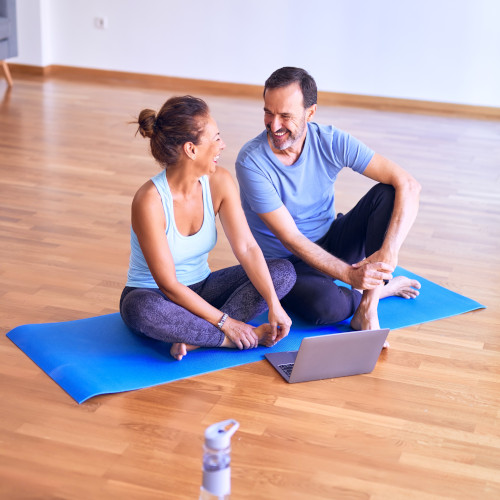
What is the ITB?
Contrary to popular belief, your ITB is not a muscle.
The Iliotibial is a band of dense tissue, also known as fascia. It begins at the top of your hip and runs down your leg along the outside of your thigh, ending on the outside of your knee. The name comes from where it starts (the iliac crest of the hip) and ends (the tibia/shin).
When discussing ITB issues, people tend to refer to ‘tight’ ITBs which need to be ‘stretched’ but neither term is quite right as fascia doesn’t have much ability to change length or contract. For the sake of this blog post, though, we’ll stick with this terminology as it’s the most common way people describe it, but just remember that it isn't technically correct. #themoreyouknow
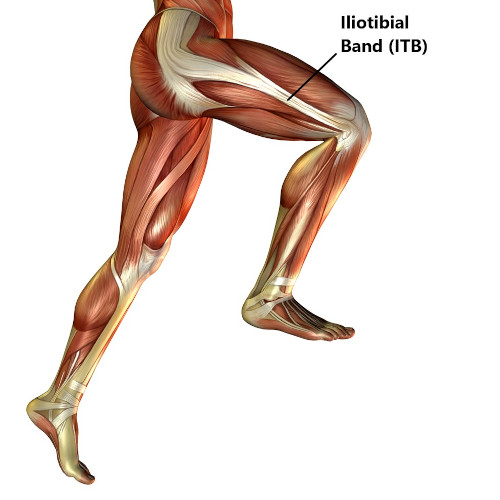
What does the ITB do?
Your ITB serves a couple of important functions:
- It helps with hip extension, abduction and rotation.
- It helps to extend (straighten) and flex (bend) the knee.
- It contributes to knee stability.
All three functions play a big role in mobility and injury prevention, so if you’re getting any niggles or issues in this area, it’s important not to ignore it.
Think of it as your bike’s bottom bracket – if you were hearing a crunching sound, you wouldn’t just keep riding your bike until the bearings destroy your frame, would you?
WOULD YOU.

Why do so many bike riders have ITB problems?
When you’re pedalling, your ITBs are constantly in use. Not only are they assisting with the movement of your legs and hips, but they’re also working hard to keep your knees in position.
As you pedal, the ITB moves across your knee bone (technically a protuberance called Gerdy’s tubercle, you’re welcome) and your hip bone. If the ITB is nice and happy, it glides past these areas without any problems. However, if your ITB begins to tighten up, it will start rubbing on the bones as you ride.
Rubbing → irritation → inflammation = hurray, you’ve got ITB Syndrome.
Cyclists aren’t the only people who are prone to ITB issues, however – it’s also prevalent in a lot of runners for the same reason: the repetitive motions required by the sport.
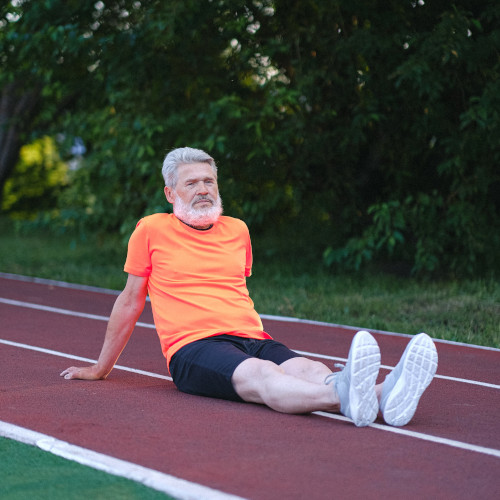
How do I know if I’ve got tight ITBs?
Common tight IT band symptoms are:
- clicking
- popping
- perceived tightness across the kneecap.
Some cyclists can experience these things but only suffer mild discomfort rather than pain. In other people, it can become so bad that they can barely walk.
It’s also not guaranteed that both ITB bands will be tight – you can have just one tight ITB, or tightness to different degrees in each leg. Most of us aren’t perfectly symmetrical, so imbalances in our biomechanics and gait patterns can contribute to loading one side of the body more than the other, even if you don’t tend to notice it in your day-to-day life.

Is a tight IT band the same thing as IT Band Syndrome?
IT Band Syndrome is where a tight IT band has progressed from being irritated to becoming more seriously inflamed.
If you’ve got aching or burning on the outside of your knee, or swelling on the outside of your kneecap, you’ve probably got IT Band Syndrome.
IT Band Syndrome pain can be particularly pronounced when cycling, and can get worse the longer you ride. For some people, this pain can – weirdly enough – stop as soon as they get off the bike. This is potentially why a lot of cyclists either think it’s not actually a serious problem or just forget about it.
Until the next ride, anyway.

How to fix a tight ITB
Remember when we said that the ITB is fascia, and not a muscle? Fascia acts differently to muscle, and doesn’t respond the same way – it’s a completely different type of tissue. You can't just release or stretch it the same way you can, say, your quadriceps, so it can be trickier to treat.
When an ITB becomes tight, it’s not really the ITB itself that has shortened – because, as we know, fascia is limited in its ability to change length – but rather the muscles that it attaches to, such as the tensor fascia latae (TFL) located at the top of the hip, and the glute max (larger butt muscle).
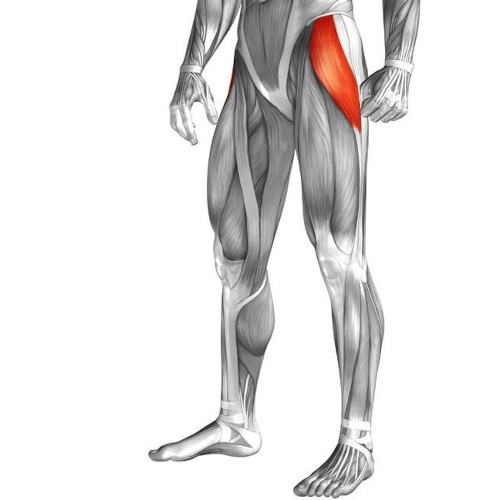
There are other muscles at play here as well, including ones which attach to the thigh, spine and pelvis. Think quadriceps (particularly the Vastus Lateralis, the outermost quad muscle), hamstrings, gluteus minimus, deep hip rotators, and iliopsoas (hip flexors). With shortened muscles, your thigh bone can also end up rotating on your pelvis, adding further strain into the mix.
What does this all mean? It means that if your first instinct is to start tackling your tight ITB with a foam roller, massage ball, stick or other instrument of torture, stop.
You’re probably wasting your time.

Instead, you need to concentrate on the muscles around the area that the ITB attaches to, namely:
- glutes
- quadriceps
- hamstrings
- TFL
These four sites are where you should be focusing, not the ITB.
You can foam-roll these areas to your heart's content, and we’ve got some guidelines on how to make this process easier, as well as the five best cycling-specific stretches to help prevent issues and injuries.
However! The TFL is a little bit harder to hit properly with a roller, so let’s check out a better technique.
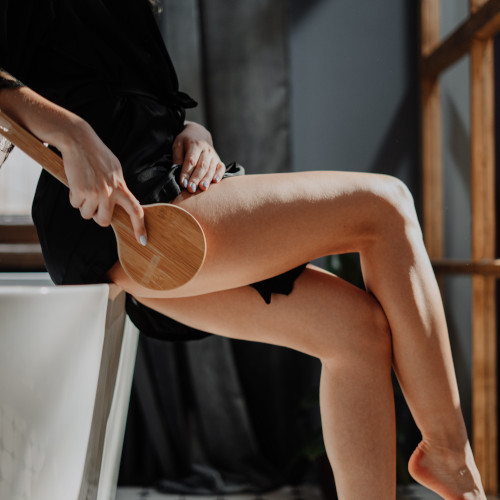
What is the TFL?
The TFL is an upper thigh muscle, and primarily helps keep your pelvis stable while you’re on your feet, no matter whether you’re walking, running or just standing around arguing about whether ceramic bearings are actually worth the money.
The TFL is heavily used, and teams up with the gluteus maximus to act on your ITB. It also doesn’t really like being in a shortened position (e.g. when you’re sitting down, which is where most of us spend our time).
Because it’s not as well known as some other muscles, the TFL can escape people’s notice when it comes to treating ITB problems, but it’s often one of the key culprits. If you’ve ever had a weird clicking or snapping-type sensation around your hip, that’s probably your TFL saying hello. Well, actually, it’s more saying ‘I’m starting to tighten up, get ready to say goodbye to your kneecaps’, but you know what we mean.

How to fix a tight TFL
The TFL is small, so it’s hard to position a roller to hit it correctly. What you really need for this area is a trigger ball. Trigger balls are easy to manoeuvre, and their size makes them perfect for releasing the TFL area.
If you don’t have a trigger ball or spiky massage ball, you can use a softball, baseball or something similar (though tennis balls tend to explode under bodyweight, so maybe give those a miss).
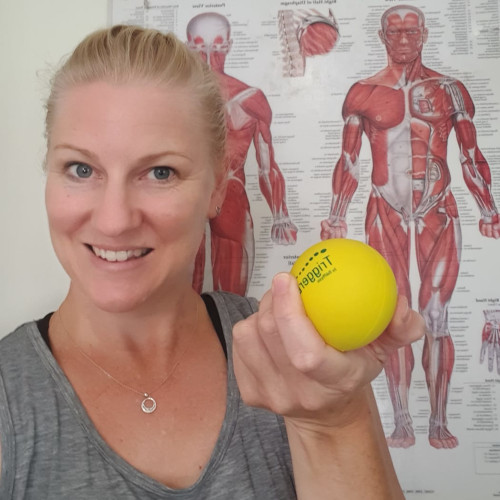
Once you’ve got your ball, the first step is to actually find your TFL, because it’s not as obvious as your glutes.
Here’s how to do it:
- Lie on your back, with your legs straight.
- Feel where your hip bones are, and place your hands just to the outside of them.
- Now raise your foot (keeping your leg straight) and rotate your foot inwards.
- Feel that muscle moving under your fingers? You’re in TFL Town, baby!

Now you know where it is, the release method is simple. (Plus here's a video demo from our go-to strech expert Holly where you can follow along.)
- Roll on your side, with your top hip slightly rotated forward.
- Position the trigger ball underneath your TFL.
- Bend your other leg to help support your body, and lean on your elbows. A cushion or soft chi ball under your upper body will also really help take the pressure off.
- Once you’re in position, gently start to roll around on the ball.
Don’t go crazy – you don’t need to cover a huge area here, you’re just working the area to find the tight spots.
While you’re moving the ball around, you might discover an area that refers pain, discomfort or a tightening sensation along the ITB. Congratulations! You’ve found an active trigger point.

Next comes the hard part: relax.
(Hey, we said it was simple, we didn’t say it was easy.)
The aim is to maintain your position with the ball on the active trigger point until the sensation you’re feeling subsides. It can be unpleasant but remember to keep breathing. Sometimes a little discomfort is necessary to the process. (You can insert your own 'it's all about the #journey' inspirational quote here as you see fit.)
If the sensation you're feeling is too painful, however, and you’re tensing up instead of relaxing, back the pressure off. You can’t properly release anything – muscle, fascia, childhood fear of clowns – when you’re stressed. Find a point where there’s some discomfort but you can breathe through it. Try to let your whole body go soft with each exhalation.
Now, wasn’t that better than smashing your ITBs with a roller?
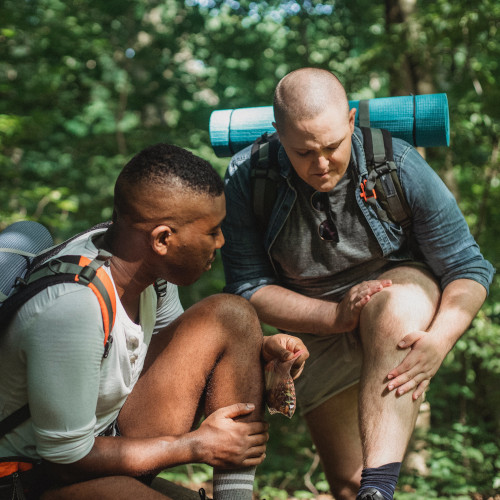
How often do I need to work on my TFL?
Ideally, you should be doing a proper prehab/recovery session twice a week, but even if you can only do one dedicated session, it will be a help.
Your recovery session should include stretching, rolling and even strengthening exercises.
Invest in yourself and block out the time to actually get it done; it will pay much bigger dividends than trying to squeeze in a few minutes of half-hearted rolling before or after a ride.
In summary, for the good of your ITBs:
Forget crushing your fascia into submission with a roller. Focus instead on the muscles of your ITB’s attachment sites – glutes, hamstrings, quads and the TFL (with which you are now much better acquainted).
Like that weird noise you might hear from your bike, always make sure to tackle any minor niggles before they turn into a big problems. Ignoring an ITB issue is almost guaranteed to make it worse and once it becomes chronic, there’s a good chance that you’ll have to stay off the bike in order to look after it. And no-one wants that.
If you want to keep cycling pain-free, be kind to your ITBs and TFL, and they’ll be kind to you.
For those (like us) who like a visual demo
Article written with input from Holly Hicks from Fluid Movement and Wellbeing, who's also the lovely lady in the video above. Thanks, Hol!
We can’t service your knees, but if your bike is making crunchy, squeaky or squelchy noises, we can look after that.
